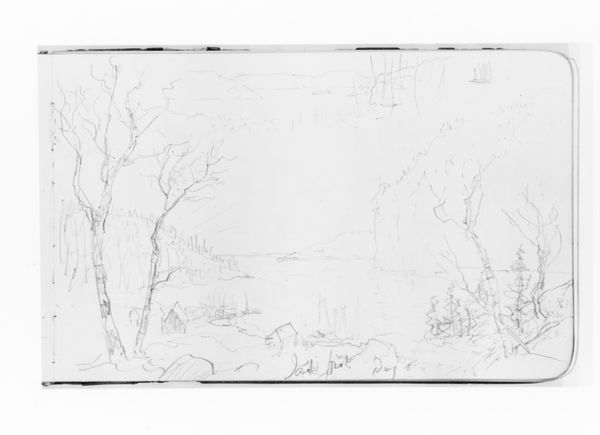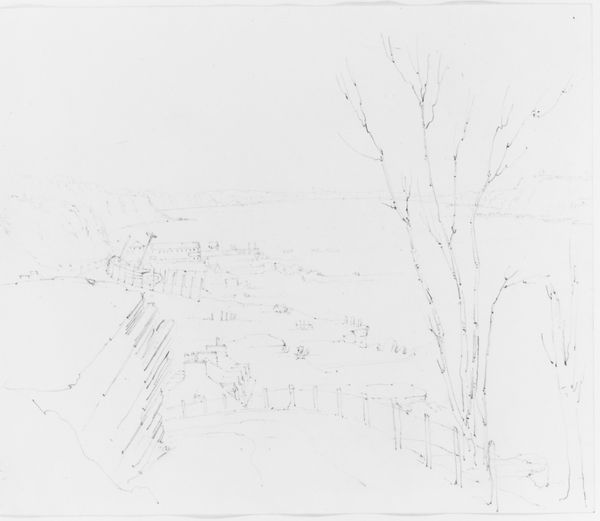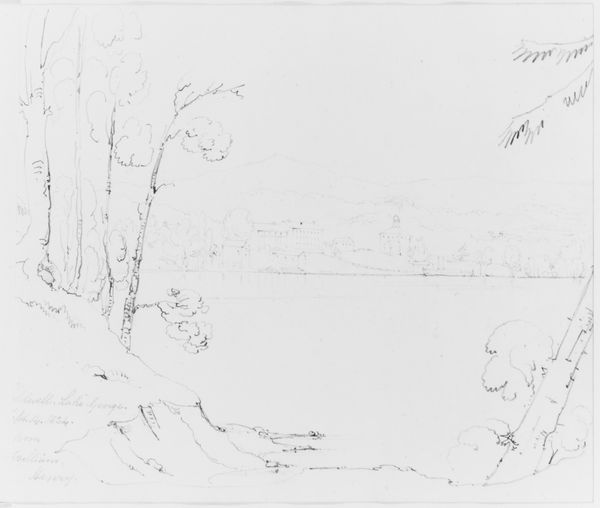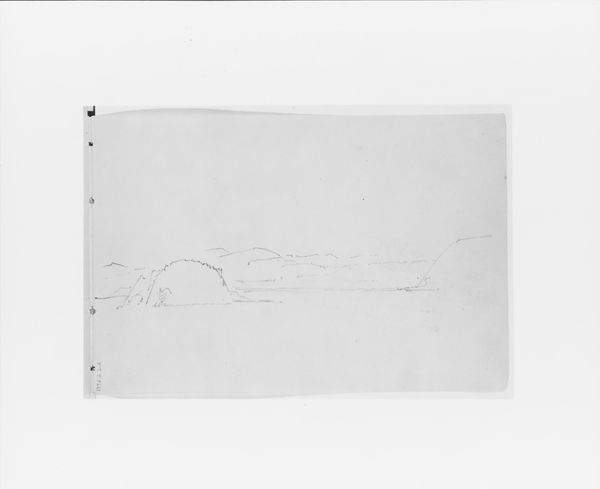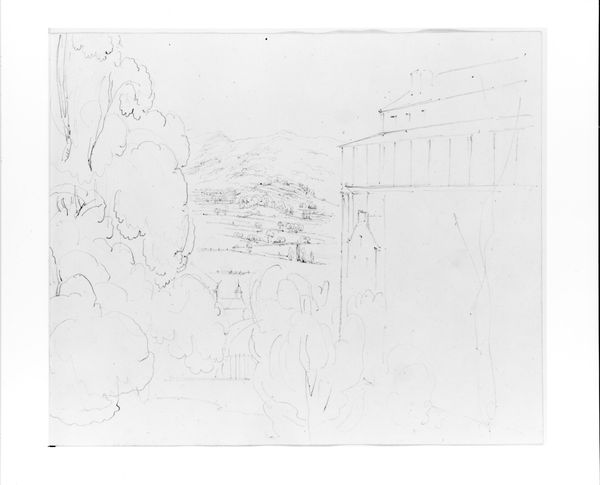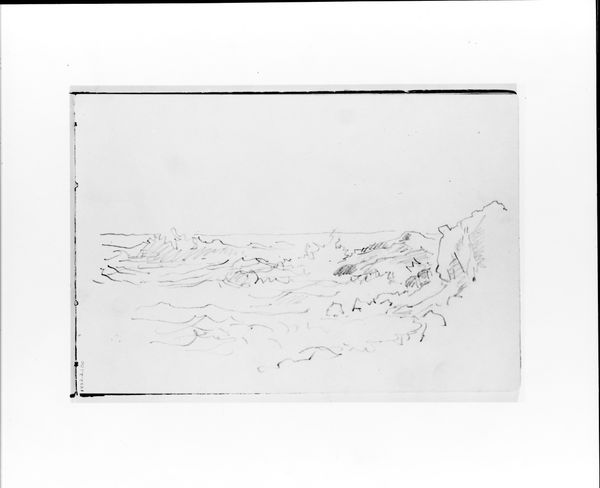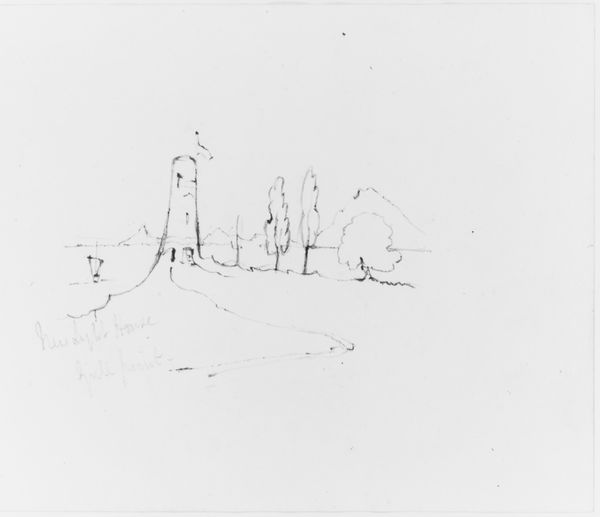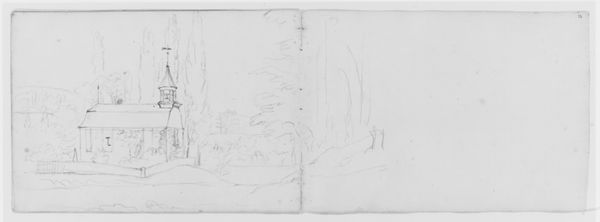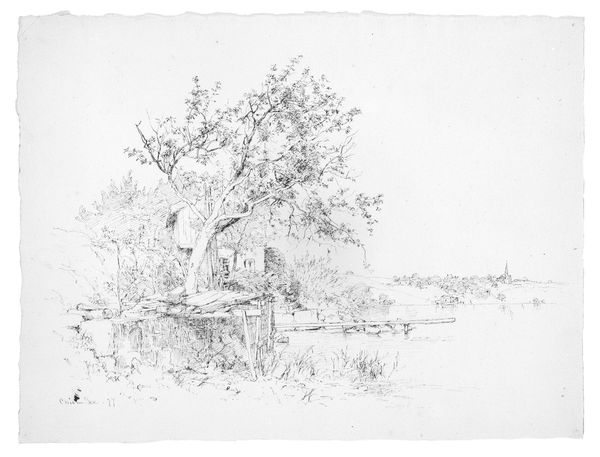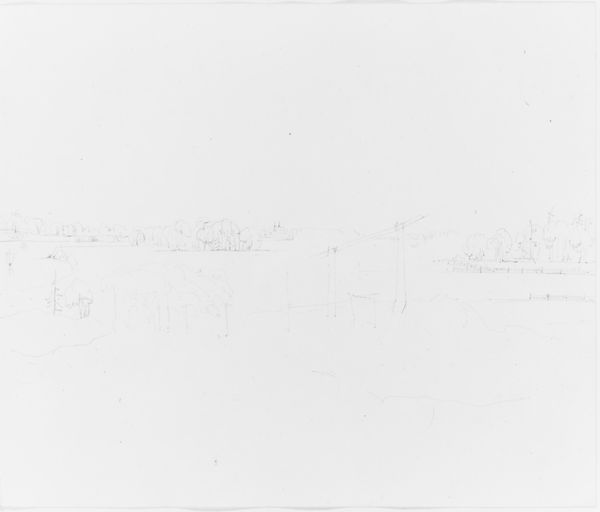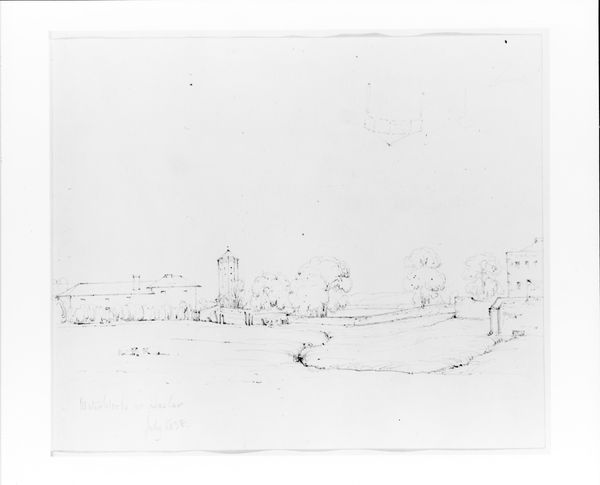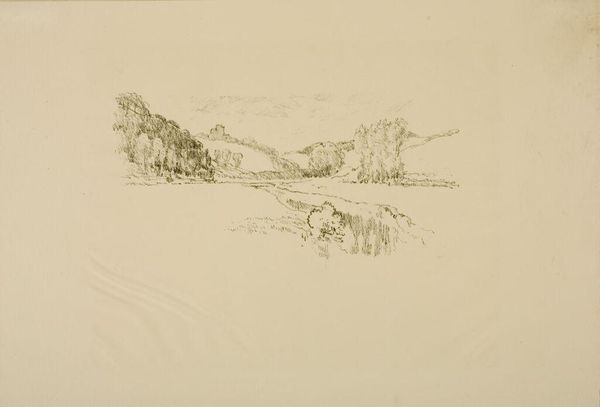
Two Tropical Landscape Studies (from Sketchbook) 1834 - 1838
0:00
0:00
drawing, pencil
#
drawing
#
landscape
#
sketch
#
pencil
#
hudson-river-school
#
line
#
cityscape
Dimensions: 7 1/4 x 9 in. (18.4 x 22.9 cm)
Copyright: Public Domain
Curator: Look, aren't these little pencil sketches just dreamy? We have here John William Casilear's "Two Tropical Landscape Studies," likely from sometime between 1834 and 1838. They feel so intimate, like stolen glances from a sun-drenched afternoon. What’s your first impression? Editor: Bleakness, actually. Economical to the point of stark. I see the landscapes—mountains, rudimentary buildings, the vague promise of lush vegetation. But mainly I notice the incredible sparseness of the mark-making. Look at the blank space, almost aggressively untouched! Curator: Sparseness, maybe. But for me, it's more about suggestion. Casilear gives you just enough, the bare bones, really, and lets your imagination do the rest. Like a half-remembered dream you're desperately trying to hold onto. The suggestive nature makes me focus more on his process. What kinds of pencils are you using when traveling in the tropics in 1835? How would you maintain it and sharpen it properly? Editor: A practical observation! Though it seems he was working firmly within the visual conventions available to a member of the Hudson River School at that time. Think of the pressures involved: find suitable scenes to romanticize, reduce them to line, and make the invisible infrastructures of global capital *feel* like serene observations. Curator: Right, right. Hudson River School, picturesque landscapes... but even within those constraints, there's a delicacy here. The lines are so tentative, so fleeting. It's like he's trying to capture not just the scene, but the very air, the ephemeral feeling of being in that place. I keep asking myself whether there's any feeling of *people* in these spaces. Does nature overpower that possibility? Editor: Interesting. The "feeling of being there" is crucial. Because of their reliance on sketches made in situ, then completed in the studio for sale, Hudson River School images perform labor while eliding it. In a way, the blank space performs that same task: the elision of labor made in transit, or within the studio, away from these vistas. The lack of heavy application gives it an air of authenticity or perhaps "purity," something difficult to ascertain from our perspective. Curator: Wow, never thought about it that way! Now I'm considering my relationship to the space itself. Casilear definitely transports me in these renderings through both place and time. There are few human signatures. They’re simply places where the sky and earth embrace under the tropical sun, untouched and waiting. Editor: Embrace or economic opportunity? Both the blank spaces and faint pencil markings hint at a visual encoding for economic consumption. We see only a whisper of the broader circumstances. I love its brevity! Curator: Agreed. It leaves you thinking, pondering. So many layers in something that looks so simple. Editor: Indeed, something that appears almost tossed-off contains immense artifice. The history of art, so fascinating.
Comments
No comments
Be the first to comment and join the conversation on the ultimate creative platform.
